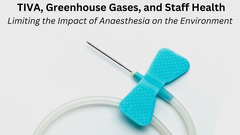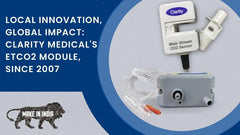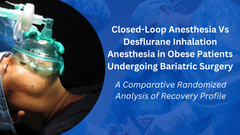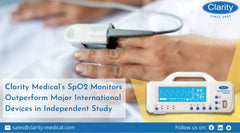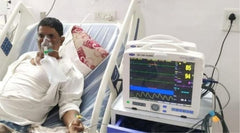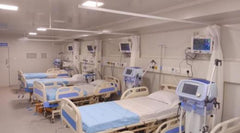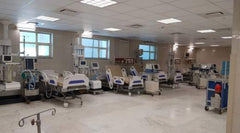Clarity Medical’s SpO2 Monitors Outperform Major International Devices In Independent Study
Oxygen saturation or SpO2 is one of the five parameters when measuring the vitals of critically ill patients. Combined with pulse rate or PR, highly accurate SpO2 measurement helps to improve patient outcomes and reduce any delays in providing critical emergency care. Pulse oximeters can forewarn clinicians about hypoxemia, leading to faster treatment of serious hypoxemia and circumventing serious complications.
About pulse oximetry
Since its introduction in 1974 by Takuo Aoyagi in 1974, pulse oximetry has become the de facto standard for evaluating oxygen saturation. Pulse oximetry works by illuminating the skin and measuring changes in light absorption of oxygenated and deoxygenated blood using 660nm (red) and 940nm (infrared) light. The absorbance ratio of these wavelengths is calibrated against direct measurements of arterial saturation to establish SpO2.
Factors affecting the accuracy of pulse oximeters
Although most devices perform reasonably well in lab setups, it is essential for pulse oximeters to perform equally well and with high accuracy in clinical settings. In a clinical setting, motion artifacts such as patient movement, tremors, low PI (perfusion index) and noise from other devices can negatively impact the accuracy of the pulse oximeter.
Independent study to verify the accuracy of six top-rated pulse oximeters
A study by the prestigious PGIMER (Post Graduate Institute of Medical Education and Research) Chandigarh found that the efficacy of these devices varies greatly in clinical conditions. This original research published in the prestigious Journal of Clinical Monitoring and Computing pits products from six different manufacturers against each other to test their accuracy and efficacy.
The researchers tested six different devices from leading manufacturers including Masimo, Clarity Medical, Lifeguard, Space Labs, Philips, and GE. This was a blind test performed using Fluke Index 2XL SpO2 simulator with two presets each for manual low PI tests and Fluke’s own level 1 and level 2 presets. Each device was tested for 30 seconds per preset for eight signals in total per preset in level 1 and for 42 seconds in level 2 tests, and low PI manual tests ran for 30 seconds each. The devices under test were graded according to their deviation from actual values. A deviation of up to 4 units was given a score of 1 and considered a good response (green). A deviation from 5-7 units was considered mediocre and given a 0.5 (yellow) score. And a deviation of 7 units or more was considered poor and given a score of 0 (red).
From these, Clarity Medical’s OxyPlus 240 ST and Philips Intellivue MX500 Vital Sign Monitor performed the best—giving accurate responses during asystole, bradycardia, hypoxia, low PI and motion artefacts. OxyPlus 240 ST scored 8 for both presets, which was the highest of the group. The device gave consistently accurate values for situations that represented actual clinical occurrences, ensuring that patients access high-quality healthcare.
Clarity Medical’s commitment to quality and reliability has ensured that its pulse oximeters, patient monitors and other groundbreaking devices can help medical institutions in India maintain world-class levels of patient care at all times. Clarity Medical is a Mohali-based manufacturer of high-quality medical diagnostic equipment that is appreciated worldwide for its efficiency and reliability. A true-blue Make in India story, Clarity Medical is committed to providing the best cost-quality ratio for all its products. Read the original research paper here.



